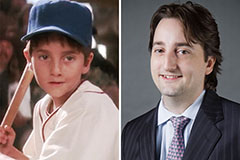3 Simple Techniques For Dementia Fall Risk
Table of ContentsThe 7-Second Trick For Dementia Fall RiskNot known Incorrect Statements About Dementia Fall Risk 7 Easy Facts About Dementia Fall Risk ShownWhat Does Dementia Fall Risk Do?
A fall risk analysis checks to see just how most likely it is that you will certainly fall. The analysis generally consists of: This consists of a collection of questions regarding your general health and wellness and if you've had previous drops or problems with balance, standing, and/or strolling.STEADI consists of testing, assessing, and treatment. Treatments are suggestions that may decrease your danger of dropping. STEADI consists of 3 steps: you for your danger of succumbing to your threat aspects that can be improved to try to stop falls (for instance, equilibrium troubles, damaged vision) to minimize your risk of dropping by making use of reliable techniques (for instance, providing education and learning and resources), you may be asked numerous questions including: Have you dropped in the previous year? Do you really feel unstable when standing or walking? Are you stressed over falling?, your provider will certainly test your toughness, equilibrium, and gait, making use of the adhering to fall evaluation devices: This examination checks your gait.
If it takes you 12 secs or more, it might mean you are at greater danger for a loss. This examination checks toughness and balance.
Relocate one foot midway ahead, so the instep is touching the large toe of your various other foot. Move one foot totally in front of the other, so the toes are touching the heel of your various other foot.
Unknown Facts About Dementia Fall Risk
The majority of drops happen as a result of numerous adding aspects; therefore, handling the danger of falling begins with recognizing the factors that add to drop danger - Dementia Fall Risk. Some of the most appropriate danger aspects include: Background of previous fallsChronic clinical conditionsAcute illnessImpaired stride and equilibrium, reduced extremity weaknessCognitive impairmentChanges in visionCertain risky medications and polypharmacyEnvironmental variables can additionally boost the threat for drops, including: Insufficient lightingUneven or damaged flooringWet or slippery floorsMissing or damaged hand rails and grab barsDamaged or improperly equipped devices, such as beds, wheelchairs, or walkersImproper use of assistive devicesInadequate supervision of the individuals living in the NF, including those that exhibit hostile behaviorsA effective loss risk administration program calls for a comprehensive professional assessment, with input from all members of the interdisciplinary team

The care strategy should additionally include treatments that are system-based, such as those that promote a risk-free setting (ideal lighting, hand rails, get hold of bars, etc). The efficiency of the interventions ought to be examined periodically, and the treatment strategy modified as essential to mirror modifications in the fall risk evaluation. Executing a fall threat management system utilizing evidence-based ideal technique can reduce the occurrence of falls in the NF, while restricting the possibility for fall-related injuries.
Our Dementia Fall Risk Diaries
The AGS/BGS guideline recommends screening all adults aged 65 years and older for loss danger yearly. This screening contains asking clients whether they have actually dropped 2 or more times in the past year or looked for clinical focus for an autumn, or, if they have not dropped, whether they really feel unstable when walking.
People that have fallen as soon as without injury needs to have their balance and stride examined; those with stride or balance irregularities need to obtain added analysis. A background of 1 fall without injury and without gait or balance troubles does not call for additional evaluation beyond continued annual loss danger screening. Dementia Fall Risk. A fall risk evaluation is required as part of the Welcome to Medicare assessment

Dementia Fall Risk for Dummies
Recording a falls history is one of the quality signs for loss avoidance and moved here administration. Psychoactive drugs in particular are independent predictors of falls.
Postural hypotension can commonly be minimized by decreasing the dose of blood pressurelowering drugs and/or stopping medicines that have orthostatic hypotension as a side impact. Use above-the-knee support pipe and copulating the head of the bed boosted may likewise minimize postural decreases in blood stress. The recommended elements of a fall-focused health examination are revealed in Box 1.

A Pull time higher than or equal to 12 seconds suggests high fall danger. Being not able to stand up from a chair of knee elevation without making use of one's arms suggests increased loss threat.
 Charlie Korsmo Then & Now!
Charlie Korsmo Then & Now! Michael Fishman Then & Now!
Michael Fishman Then & Now! Tina Majorino Then & Now!
Tina Majorino Then & Now! Andrew McCarthy Then & Now!
Andrew McCarthy Then & Now! Teri Hatcher Then & Now!
Teri Hatcher Then & Now!